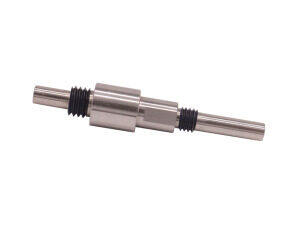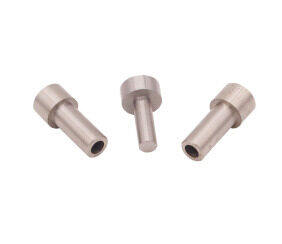Kunshan Guozheng Precision Mold Co.,Ltd
Add: No.396, Dujia Road, Zhoushi Town, Kunshan City
Email: info@kokusei-seimitsu.com.cn
Tel:+86 0512-57171088
Phone: +86 0512-57171088
Email:info@kokusei-seimitsu.com.cn
Website: www.kokusei.com.cn
Address:No.396, Dujia Road, Zhoushi Town, Kunshan City
Ensuring the robustness and durability of CNC machining parts is crucial to their performance and longevity. It involves various considerations and steps to be taken during the CNC machining process. In this article, we will discuss several key factors that contribute to achieving robust and durable CNC machining parts.
Material Selection: The choice of material plays a significant role in determining the robustness and durability of CNC machining parts. It is important to select a material that can withstand the intended application's mechanical stresses, environmental conditions, and wear and tear. Depending on the requirements, materials such as stainless steel, aluminum, titanium, and various alloys may be suitable options. The chosen material should have appropriate strength, hardness, corrosion resistance, and fatigue resistance characteristics.

Proper Design: Designing a part with robustness and durability in mind is crucial. This involves ensuring the part's geometry, dimensions, and tolerances are optimized for the intended application. Design features such as fillets, ribs, and reinforcements can improve the part's strength and stiffness. Furthermore, avoiding sharp corners and edges can reduce stress concentrations that can lead to premature failure. Using appropriate design tools and software, such as Computer-Aided Design (CAD), can aid in creating parts with optimal design for robustness and durability.
Machining Process Planning: Careful planning of the machining process is essential to ensure robust and durable CNC machining parts. This includes selecting appropriate cutting tools, machining parameters, and strategies. High-quality cutting tools, such as carbide or ceramic inserts, should be used to achieve precision and minimize tool wear. The cutting parameters, such as cutting speed, feed rate, and depth of cut, should be optimized to prevent excessive tool wear, heat generation, and vibration. Additionally, selecting suitable machining strategies, such as proper tool paths and cutting sequences, can minimize material deformation and stress in the part.

Quality Control: Implementing a comprehensive quality control process is vital to ensuring the robustness and durability of CNC machining parts. This involves regular inspections and measurements to verify dimensional accuracy, surface finish, and other critical specifications. Advanced inspection tools, such as Coordinate Measuring Machines (CMM), can be used to perform accurate measurements. Additionally, non-destructive testing techniques, such as ultrasonic or X-ray inspection, can be employed to identify any internal defects that may compromise the part's durability.
Surface Treatment: Applying surface treatments to CNC machining parts can enhance their robustness and durability. Depending on the material and application requirements, surface treatments such as anodizing, plating, or coating can be employed. These treatments can improve corrosion resistance, wear resistance, and reduce friction, thereby increasing the part's lifespan and performance. Additionally, post-processing treatments like deburring or polishing can be performed to remove any sharp edges or burrs that may weaken the part.
Testing and Validation: Conducting thorough testing and validation of CNC machining parts is essential to ensure their robustness and durability. This involves subjecting the parts to various mechanical, environmental, and performance tests. Mechanical tests, such as tensile, compression, or fatigue tests, can help determine the part's strength and resistance to deformation. Environmental tests, such as temperature or humidity exposure, can evaluate the part's performance under different conditions. Additionally, testing the part in realistic operating conditions can validate its durability and identify any design or manufacturing flaws that need rectification.
In conclusion, achieving robustness and durability in CNC machining parts requires careful consideration of material selection, proper design, meticulous machining process planning, rigorous quality control, appropriate surface treatments, and comprehensive testing. By following these guidelines, manufacturers can produce CNC machining parts that are reliable, long-lasting, and capable of withstanding demanding applications.